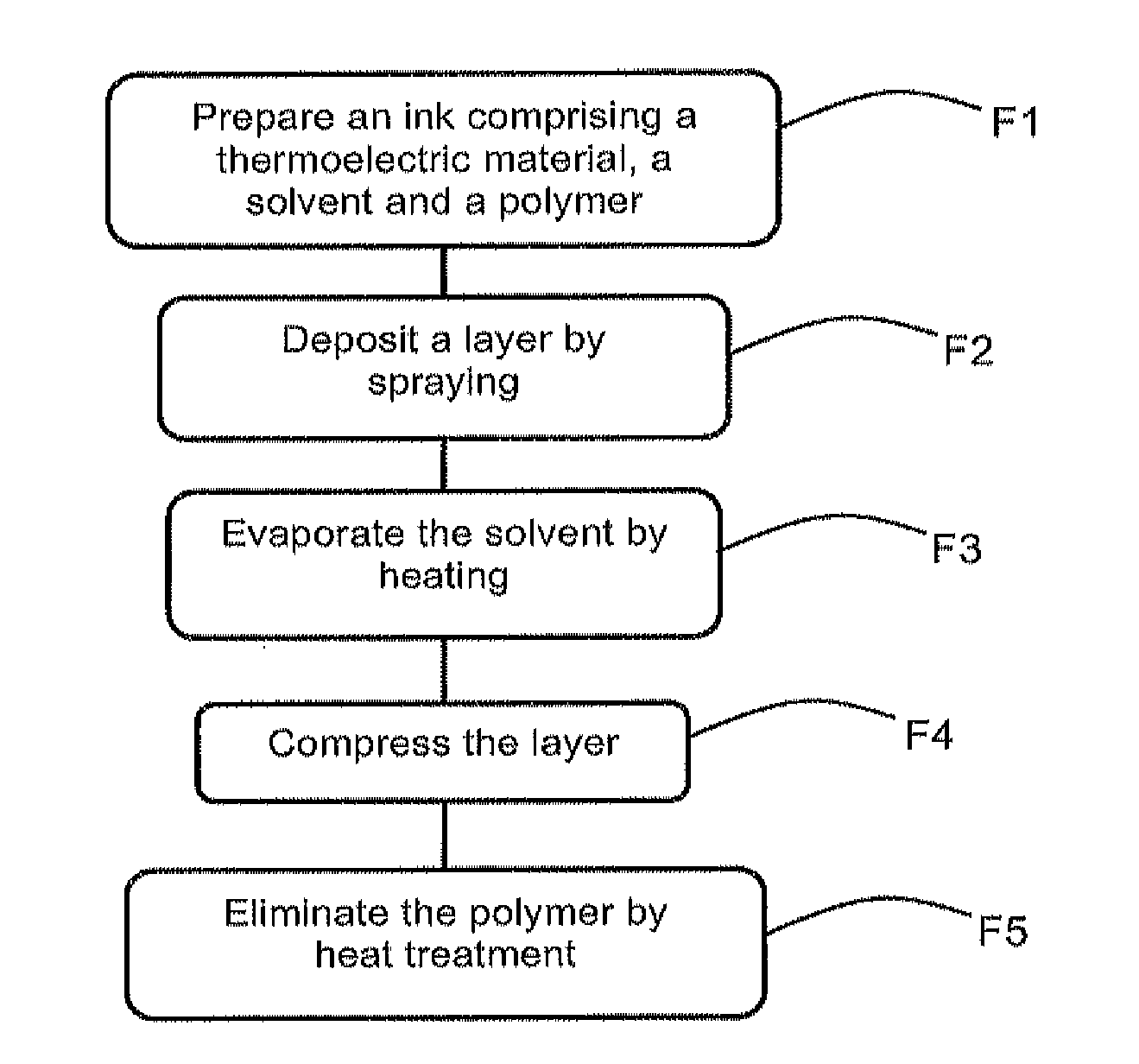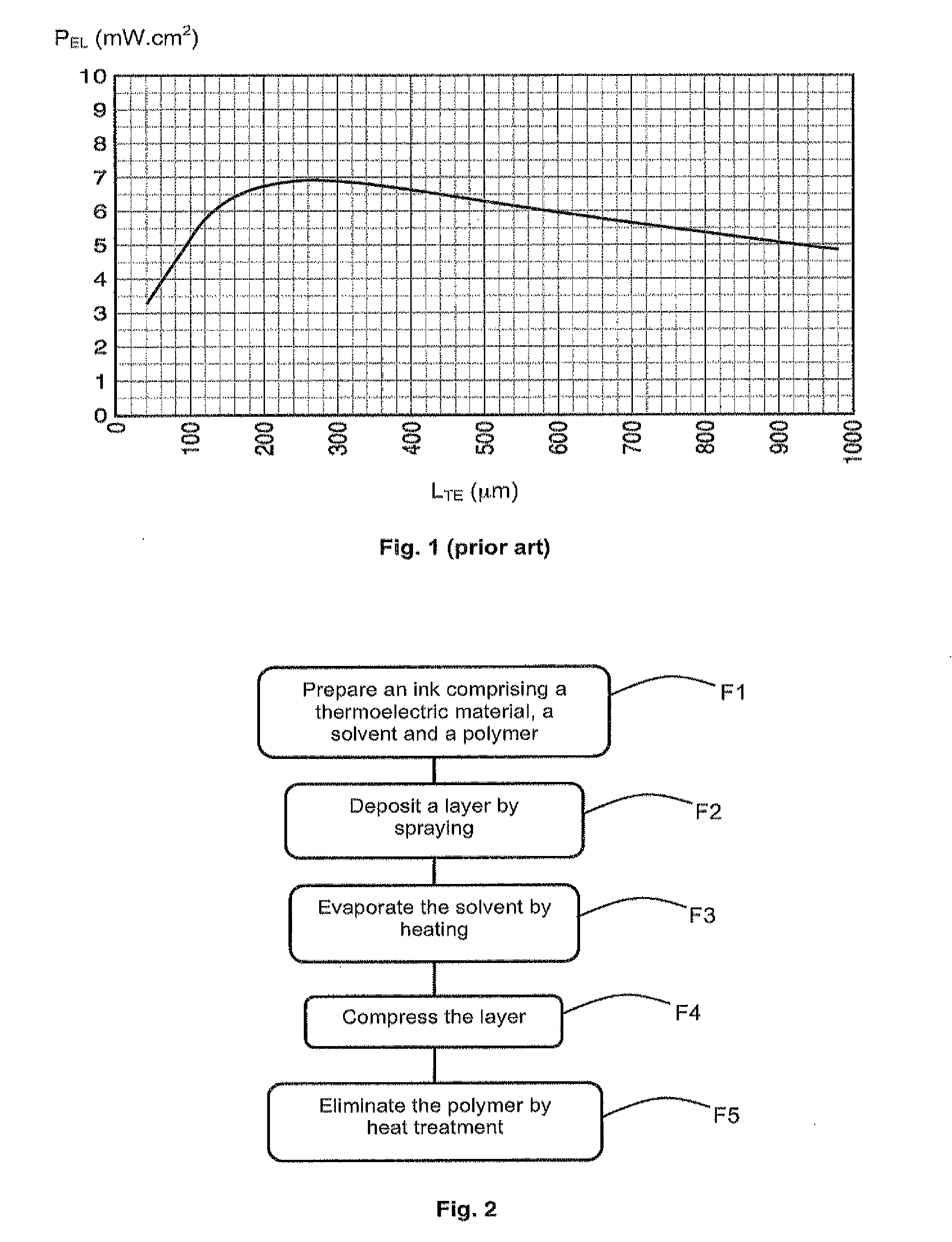Deposition of thermoelectric materials by printing
a thermoelectric material and printing technology, applied in the direction of duplicating/marking methods, mechanical vibration separation, coatings, etc., can solve the problems of large mechanical stresses in the thermoelectric layer produced, heavy technology implementation, and inability to form thin films, etc., to achieve good mechanical properties and high thermoelectric performance
- Summary
- Abstract
- Description
- Claims
- Application Information
AI Technical Summary
Benefits of technology
Problems solved by technology
Method used
Image
Examples
Embodiment Construction
[0021]It is proposed here to limit the internal stresses due to elimination of the solvent and of the polymer material by depositing the ink by spraying. The spraying conditions are chosen such that a part of the solvent is evaporated when deposition is performed. A porous layer is then obtained, which will enable the stresses to be relaxed when final elimination of the additives takes place.
[0022]FIG. 2 represents steps of a method for producing layers of thermoelectric material with relaxed stresses, in flowchart form.
[0023]In a step F1, an ink compatible with the spray printing technique is prepared. The ink comprises a thermoelectric material designed to form the thermoelements, a polymer material and a solvent.
[0024]The thermoelectric material is preferably in the form of semi-metallic or semi-conducting particles with a diameter comprised between 10 nm and 10 μm, dispersed in the solvent. The thermoelectric material can be chosen from bismuth and tellurium alloys, for example ...
PUM
| Property | Measurement | Unit |
|---|---|---|
| thickness | aaaaa | aaaaa |
| thickness | aaaaa | aaaaa |
| diameter | aaaaa | aaaaa |
Abstract
Description
Claims
Application Information
 Login to View More
Login to View More - R&D
- Intellectual Property
- Life Sciences
- Materials
- Tech Scout
- Unparalleled Data Quality
- Higher Quality Content
- 60% Fewer Hallucinations
Browse by: Latest US Patents, China's latest patents, Technical Efficacy Thesaurus, Application Domain, Technology Topic, Popular Technical Reports.
© 2025 PatSnap. All rights reserved.Legal|Privacy policy|Modern Slavery Act Transparency Statement|Sitemap|About US| Contact US: help@patsnap.com



